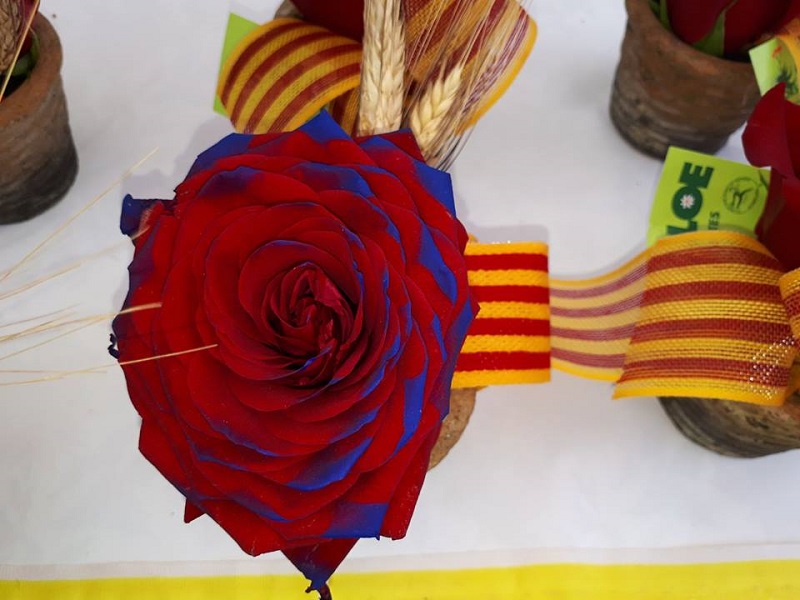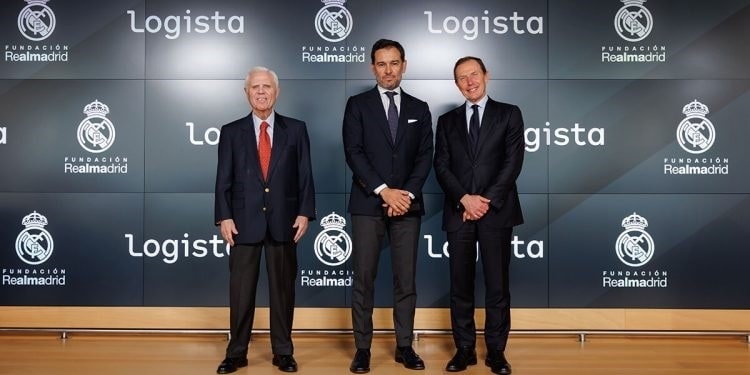The Chair of Radiotelevisión Española at the Universidad Politécnica de Madrid has presented on Thursday 27th April 2023 the first pilot broadcast, at national level, of DVB-I channels of RTVE linked to the DTT signal.
As on other occasions, this pilot has been possible thanks to the collaboration of all the members that make up the Advisory Committee of the Chair in technological aspects: Cellnex Telecom, Dolby, Sapec and Televés Corporation (Gsertel, TRedess and Televés). The signal display was provided by Vestel, which supplied two commercial model of the screen that included the software update necessary to correctly interpret the DVB-I signalling emitted in the DTT signal.
The event took place in the Graduation Room of the Escuela Técnica Superior de Ingenieros de Telecomunicación of the Universidad Politécnica de Madrid, at the University Campus. In order to make the event more dynamic and attractive, the format chosen was that of a short introduction to the DVB-I standard, a brief description of the technical aspects implemented in the pilot, a live demonstration of the channel tuning and navigation procedure, and an open question and answer session to solve all the doubts and curiosities of the attendees.
Manuel Sierra, director of the ETSI de Telecomunicación – UPM, opened the event, welcoming the attendees and underlining the importance of this type of pilots to promote technical innovation in our country in aspects related to the production, distribution and exploitation of multimedia content, a subject traditionally linked to Telecommunication Engineering.
On behalf of RTVE, the event was introduced by its director of Innovation and Digital, Urbano García, who highlighted the importance of innovation for a company like RTVE, which operates in a constantly evolving sector.
He highlighted the importance for RTVE of carrying out this type of pilot projects with other companies and universities, in an open way, always with the aim of acquiring new experiences and knowledge, and to enrich both RTVE and the audiovisual sector in general in our country.
Adolfo Muñoz, director of the RTVE Broadcasting Area, gave a general presentation of the broadcasting pilot, describing the interest RTVE has in having different mechanisms for distributing the signal to the user, with innovations that include aspects of Virtual Reality (VR), personalisation, thematic variants (such as eGaming) or even different types of signal quality, such as UHD. He concluded by pointing out the upcoming pilots that the RTVE Chair at the UPM is working on, with 8K signal or making use of 5G networks.
José Manuel Menéndez, full professor of the ETSI de Telecomunicación and director of the RTVE Chair at the UPM, gave a brief presentation of the DVB-I standard, its possibilities, and the relevance it is acquiring in view of the pilots that are being deployed in other countries, such as Italy and Germany.
Álvaro Llorente, researcher of the Visual Telecommunications Application Group of the E E.T.S. de Ingenieros de Telecomunicación – UPM, and member of the Chair, detailed the simplified engineering diagram of the broadcasting pilot, describing the process of generating the DVB-I service lists and the tools used for it, the UHF channel 44 used for the non-commercial broadcasting of DVB-T signal with DVB-I signalling, and completed the demonstration with a live tuning of the broadcasted signal and the channels offered.
DVB-I possibilities
Through the DTT signal, the RTVE services of the RGE2 multiplex (UHF channel 41 in Madrid) were broadcast on channel 44: Clan, Clan HD, tdp, tdp HD, Radio Clásica HQ RNE, Radio3 HQ RNE and Radio Exterior RNE. While the tdp HD channel was broadcasting a produced version of the 7 tennis matches of the Mutua Madrid Open tournament that were being played simultaneously, users were offered the possibility of selecting the individual camera of each of the 7 playgrounds of the matches that were being played through DVB-I channels, thus facilitating the viewing of the selected match. For practical purposes, the TV user was shown 11 TV channels (the 4 DTT channels plus the 7 DVB-I channels) which he could navigate between with his remote control in the conventional way, without noticing any difference between them.
José Manuel Menéndez highlighted other possible uses that DVB-I can provide to broadcasters, linking channels to DTT broadcasts with personalised content, thematic content (eGaming for the tdp channel, for example) or content with other qualities or complexities, such as UHD or Virtual Reality (VR)/360º or multiview. In short, DVB-I can be a perfect complement for broadcasters by allowing complementary views and new quality standards to be added to broadcasting.
During the event, attendees were able to view the DVB-I signal and use the TV remote control to switch between DTT and DVB-I channels.
Regarding the broadcasting of the content, the signal was broadcast from the TV headend of the ETSI de Telecomunicación of the UPM, located in the University City of Madrid, on UHF channel 44, temporarily assigned to the RTVE Chair at the UPM by the Secretary of State for Telecommunications and Digital Infrastructures – SETID – for its test broadcasts. The multiplex configuration was identical to the one used for the rest of the DTT broadcasts in Spain: 8 MHz bandwidth, 64-QAM modulation, 8K, IG 1/4, FEC 2/3, with an effective bit rate of 19.91 Mbs.
In the days following the pilot, and until 31 May 2023, anyone who wishes to do so will be able to see the screen with the broadcasting signal in situ, in the laboratory of the RTVE Chair at the UPM (at the ETSI Telecomunicación of the UPM).
This pilot is part of the activities of the RTVE Chair at the Polytechnic University of Madrid, established in January 2015, which has participated in the development of a wide range of experiences in the field of production and distribution of digital TV signal in recent years.
The Technical University of Madrid or sometimes called Polytechnic University of Madrid (Spanish: Universidad Politécnica de Madrid, UPM) is a public university, located in Madrid, Spain. It was founded in 1971 as the result of merging different Technical Schools of Engineering and Architecture, originating mainly in the 18th century. Over 35,000 students attend classes during the year.
According to the annual university ranking conducted by El Mundo, the Technical University of Madrid ranks as the top technical university in Spain, and second overall. The majority of its Engineering Schools are consistently ranked as leading academic institutions in Spain in their fields, and among the very best in Europe.
The UPM is part of the TIME network, which groups fifty engineering schools throughout Europe.











